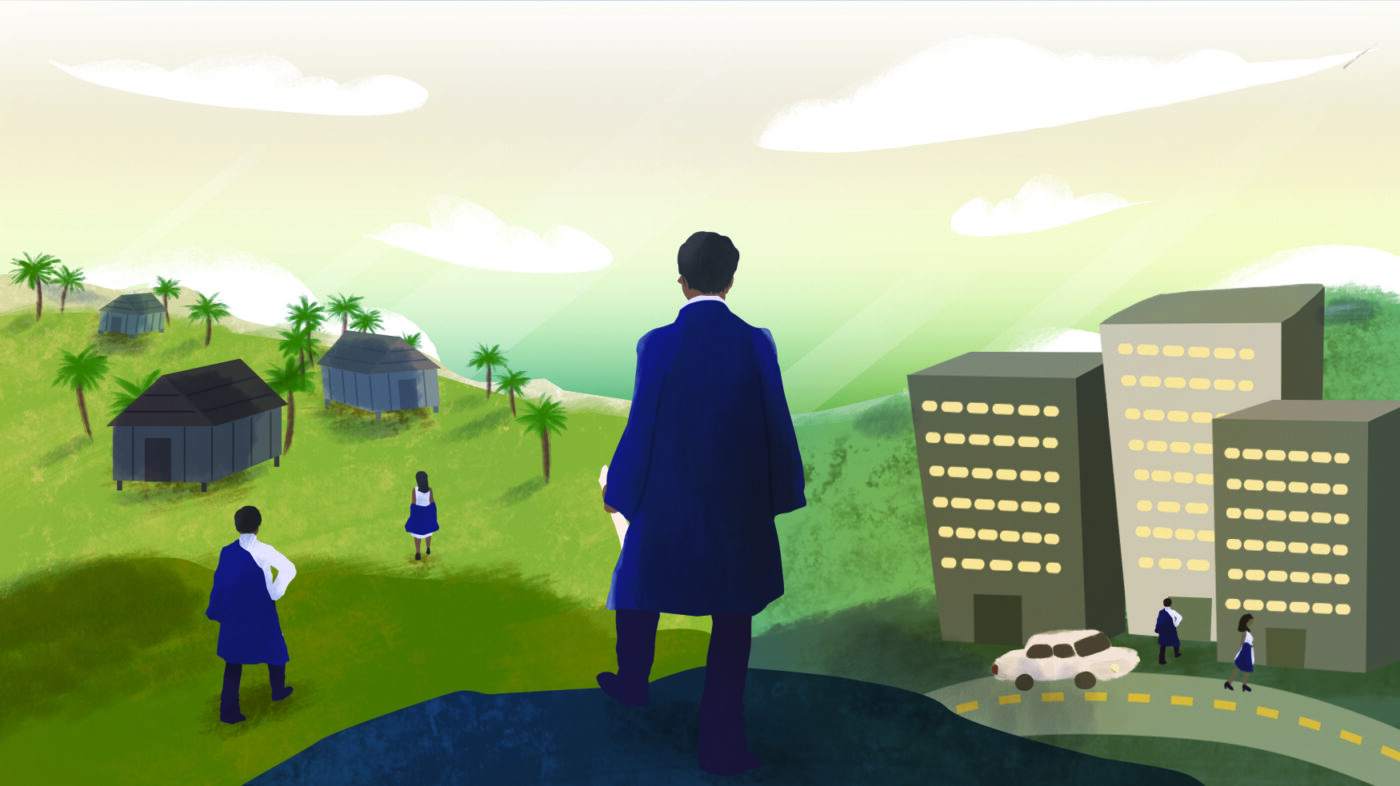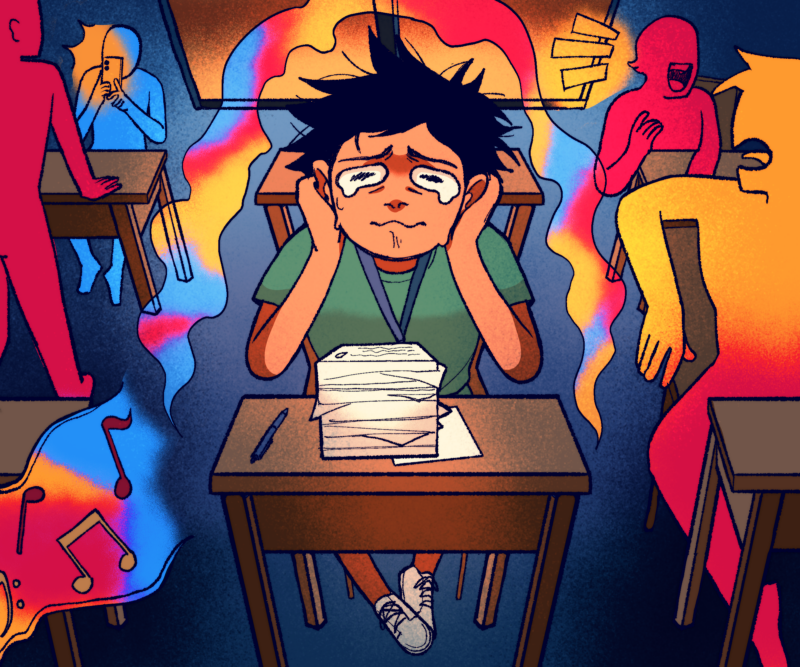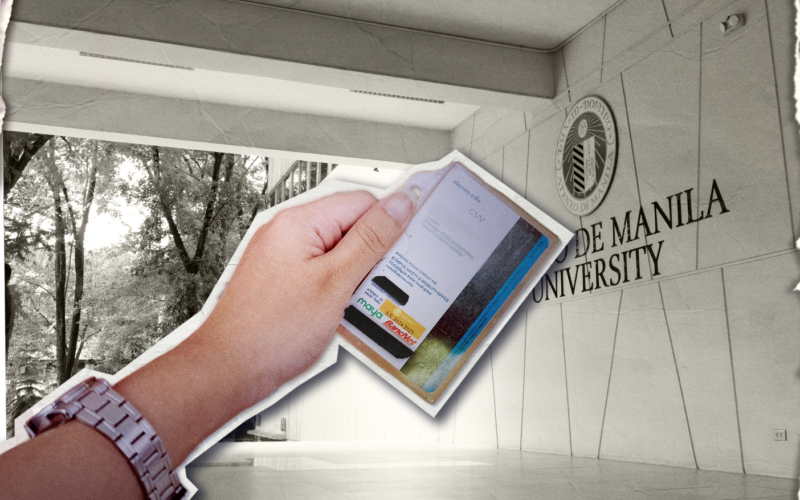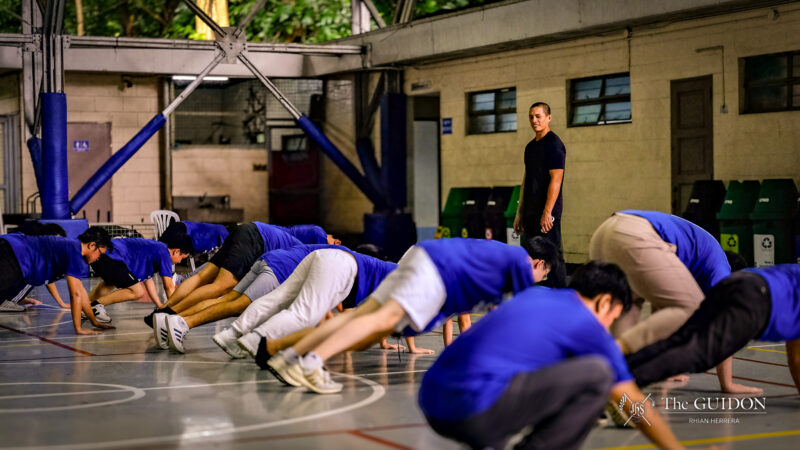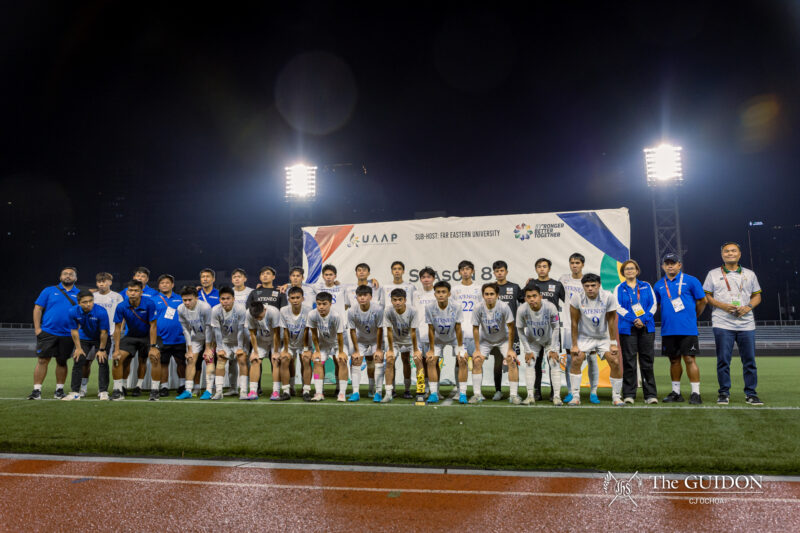As the new year is welcomed, the Jesuit Volunteer Program’s (JVP) 38th batch of volunteers head back to their respective communities after spending the holidays with their family and friends.
Since its founding in 1980, the JVP has been an avenue to engage in social development in marginalized communities for both Ateneans and non-Ateneans alike, and undergo the formation of Ignatian Spirituality in what may be a yearlong experience—or more.
Most volunteers apply immediately after graduating college, and there is a perceived risk when one decides to postpone entering the workforce or pursuing a postgraduate degree.
Some volunteers apply when they are older, when circumstances did not allow them the opportunity to serve right after graduating. However, despite having stable occupations, some volunteers step down from their jobs and follow their dreams of serving in the program.
JVP’s unique opportunity of participating in volunteer work is often seen by people as its most recognizable feature.
Yet, as alumni have raised concerns about the average number of volunteers per batch dwindling, the question still remains: What reasons prompted past volunteers to sacrifice a year of their lives, to serve in far-flung provinces with minimal compensation for their work?
While the nature of the program gives way to self-formation, there is also the important question of whether the program allows for lasting changes in the communities being served.
A call to serve
The program was the brainchild of both Fr. Joaquin Bernas, SJ, then provincial of the Society of Jesus in the Philippines, and Fr. William Kreutz, SJ, then college chaplain of the Ateneo de Manila.
A similar program, the Jesuit Volunteer Corps, was growing in the United States, and the two priests desired to have the same work in the Philippines. With support from other local Jesuits and the approval of the order, JVP was founded in 1980.
University President Jose Ramon T. Villarin, SJ was among the first batch of JVP volunteers. At that time, Villarin was unsure of entering the priesthood. His father was open to him serving in Mindanao, but his mother was reluctant to allow him due to threats of violence.
With a simple phone call from a place where people were throwing grenades around, the young Villarin was presented with an extraordinary chance.
Villarin recalls what got him to accept his professor’s call to serve in Davao: “My personal growth as a person would be accelerated exponentially in a curve and not just in a line.”
At that time, the program was nowhere near as structured and formulated as it is now, yet he found encouragement from his former Physics professor, Fr. Francisco Glover, SJ: “Oh, you’re already [here] so why not join the JVP?”
The opportunity for self-growth induced by uncertainty is a common sentiment echoed by several other volunteers. The JVP has become a means of soul searching for Ateneans who are not exactly sure of what else they wish to do with their lives. In the process of this formation, self-identity becomes an equal point of reflection for the volunteer.
“In a sense, it’s sort of like breaking the umbilical cord. So much of who you are is defined by with your family, so this experience would be a way of coming to your own, answering the question of ‘Who am I?’ It’s selfish but it’s also selfless I think, because you also discover many things for yourself,” Villarin says.
Michael Joseph Juan (BS ME ‘97) had been working for Philam Life Insurance for five years when the passing of his boss spurred his decision to enter JVP in 2002 as a member of Batch 23. The prospect of just working for the rest of his life crossed his mind.
“I wanted to try something else… [so] I joined JVP,” he says. The setting of the province greatly contrasted his corporate workplace. “You wouldn’t know where you [would] be assigned… some community in a mountain, it wouldn’t be too bad.”
For other volunteers, it is not a discovery per se, but more of an affirmation of who they think they truly are; the JVP provided an honest outlet for that expression of who they believed themselves to be.
“Since I was young, I have always been inclined towards social development. I wanted to work in the development setting through research-creating technology for the benefit of the poor,” says Anthony Fernandez (BS CE ‘13). He believed that entering the program would allow him to be anchored in the reality of poverty while being able to apply what he learned in college.
Pia Ortiz-Luis (AB IS ’97) viewed JVP a continuation of her life’s dedication to volunteerism. As a high school student, she volunteered for a weekly outreach program to teach street kids in Apelo Cruz, Pasay. In Ateneo, she was a member of the Ateneo Catechetical Instruction League and taught catechism in urban poor communities such as Escopa and Constitution Hills.
“As early as my freshman year, I was determined to pursue [JVP] after graduation.” For Ortiz-Luis, it was a challenge to “learning what entails going beyond the four walls of the classroom and immersing oneself into where society’s pain is.”
‘To toil and not to seek for rest’
In the span of 37 years, the Jesuit Volunteer Program has spread to different parts of the Philippines, with 335 partner institutions helping in realizing the mission and vision of the Jesuits.
The program has a multitude of social development objectives, ranging from teaching urban poor children to bridging cultural gaps with indigenous people and training local communities in organizational development. Anchored in its five core values of spirituality, simplicity, social justice, service, and solidarity, the JVP allows its volunteers to have these values as a lived experience.
Jay Halili (AB IS ’97) was assigned as a teacher in Bulan, Sorsogon. Despite having no formal training in education and lacking the necessary research tools, he had to quickly adjust to teaching Filipino and Music. He served as a class adviser and headed the school’s community outreach program. The on-the-fly demand and the multifaceted nature of his tasks spurred his notion that one’s own personal growth is as an important objective as leaving a positive impact on the community. “You’re making a difference [and] trying to help, but when you get there it becomes a little bit more personal.”
This sentiment is shared by his partner, Ortiz-Luis, who taught Social Studies and English, and moderated the school’s student council. “It is a cycle of giving and receiving.” As teachers, they were not only there to guide students, but to learn from them as well. By immersing themselves in a different setting, they are made aware of the “magnitude of various social issues in the countryside.”
“In this process of losing yourself [in service to others], you sort of gain yourself,” says Bok Arandia, SJ (AB PSY ‘05), currently a Jesuit scholastic. He was already a lawyer working in a firm when he decided to enroll in JVP. “My ultimate joy really was to be able to serve and the JVP experience a stepping stone to something greater, a greater call of service.”
However, there are limitations to the extent of JVP. While the program can do personal wonders for the volunteers, its usual brevity can become restrictive to how much lasting change can be effected in the communities they serve.
“Sometimes you discover that nothing dramatic really has changed in their lives. I mean what could you do completely in 10 months? But the important thing is your presence has made a difference in their lives, that you’ve touched people’s lives in that particular community,” Arandia says.
The experiences of some in the volunteer program point out that the important thing is not “change” per se that occurs during the immersion. Structural improvements in societies seem to not be the highest goal of JVP during the time given, but the formation of its volunteers. This brings up the question of who the program really serves.
The ‘I’ in service
The emphasis on formation may become problematic when it begins to be more for the volunteer than the community he or she is supposed to serve.
If one were to visit the JVP website and click around, colorful and creative graphics share vivid and inspiring stories of JVP volunteers discovering themselves and their capacities during their immersions in the community. With volunteers up and center sharing how much the program gave to them, with hardly and if not none at all input from people from the communities themselves.
The way JVP markets itself runs the risk of highlighting volunteers more than the communities, placing the immersion as almost like a mere stepping stone to self-improvement.
The single-year stint in the program can also be lacking. Anthony Fernandez (BS CoE ‘13), a JVP volunteer, decided to extend his stay for another year, feeling that, he wasn’t able to do enough for the community in the usual volunteer period provided by JVP.
“After my first year as a JVP, I felt that something was still lacking. I felt that I have not done enough and that I will be missing a lot if I don’t go back. Hence, I extended my stay for two years.”
With the JVP’s usual length, it may leave the takeaway from the immersion uneven, leaving volunteers with life-changing experiences and communities with not so much. The JVP is directed by the belief that it “engages in nation-building by recruiting, training and sending volunteers for a year of service to marginalized communities and areas with the greatest need.”
With enacting more physical and lasting changes needing more than a year in a community, the JVP is at least able to perform its primary goal—volunteer formation. This is reflected in their mission of “form[ing] a community composed of volunteers, former volunteers, and associates who nurture and live out the principles and values of Ignatian Spirituality embodied in and realized through their individual vocation.”
“After my JVP years, I have had the opportunity to work with civil society organizations engaged in education, youth development, and community empowerment in various development contexts,” Ortiz shares.
Previous volunteers have come to look back at the JVP as a stepping stone to serve in other areas, such as becoming a Jesuit or involved in NGOs.
When asked about one of the ways JVP can still attract new volunteers, Villarin said: “I don’t think that there are really any lost opportunities especially for Ateneans, not to be pagyayabang. Joining the JVP would only increase your worth, and your attractiveness to organizations that would value the things that JVP teaches you.”
With all these said, an evaluation of the current structuring and marketing of the JVP may be in order to see if it makes itself susceptible to encouraging the more individualistic and self-serving aspects of volunteer work over making lasting improvements in their communities.
‘Ruined for life’
Living outside one’s comfort zone and being immersed in a community with a different social context transforms the volunteer’s perspective on life. Volunteers are given an opportunity to find themselves, affirm who they believe they are, or both, while in the process of helping others.
The program’s lasting influence can be seen through the various life paths volunteers have undertaken post-JVP.
Arandia and Fernandez choose to enter the Society of Jesus and considering priesthood. Juan shifted from corporate work to the development sector. Ortiz-Luis became an executive of Cartwheel Foundation, a partner organization of JVP which helps indigenous peoples.
“Once you do JVP, you’re ruined for life! And [what] is meant by that is the whole experience doesn’t leave you anymore, it’s foundational,” Villarin says.
While JVP’s influence on the volunteers’ lives cannot be understated, there is less to be said about its long-term impact on the communities. However, the given timeframe of the program prevents any individual to bring upon lasting change alone, and instead, each person’s experience must be viewed as part of a larger picture. They each take that small step of service, which ideally, is further built upon by each succeeding batch.
“What started out for me as a one-year commitment has, indeed, become a lifetime mission,” shares Ortiz, a sentiment also felt by many other volunteers.

